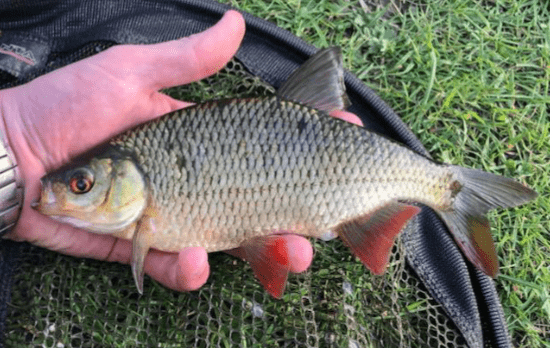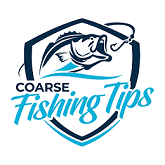
What are Silverfish?
I was down at a local pond this weekend and saw a notice for an up-coming ‘Silverfish Only’ match; the notice stated that “anything except Carp” can be weighed in.
So, by that definition, anything but Carp is a Silverfish, but surely not! I mean, is a Perch a Silverfish? they are various hews of green and look more like a fish in military camouflage than a ‘Silverfish’.
I asked the club secretary about this and his response was that, in his opinion, only Silver (as in the colour) fish are truly ‘Silverfish’; but for the purpose of the competition it is just Carp and Pike that are not to be weighed in. He said that the pond is predominantly Carp and catching larger specimens of other fish, while avoiding Carp, can be quite challenging.
Silverfish fishing is referred to quite frequently in articles and how-to guides online, but there doesn’t seem to be a definitive consensus as to what constitutes a Silverfish.
I decided to do some research asking forums, Facebook groups and local anglers what they considered to be Silverfish. This question caused a lot of debate, but I have compiled a list of fish that were most frequently referred to as Silverfish; and guess what! They’re all Silver!
For information on when you should change your fishing line read – How Often Should You Change Fishing Line?
Bleak
Bleak are very small fish that live in large shoals. While Bleak are not exactly a challenge to land, because they are so tiny, it’s possible to catch many of them. If you are fishing in a ‘Silverfish Only’ match and get in to a Bleak shoal, it’s possible to catch one literally every 15 seconds; and this can be difference between winning and losing a match.
Imagine catching 10 Bleak that weigh 2oz each. 20oz is 1.25lb of fish. The British record for a Bleak is 4oz.
Bleak have bright sliver sides with a small head and very large eyes (compared to the head size). Bleak should be handled with care as their scales can easily detach which can harm the fish.
Bleak generally feed off the surface of the water, this can make them quite tricky to catch; it can be a very fine line between a Bleak that is nibbling on the bait and one that has taken the bait and hooked.
A good technique that Anglers suggest is to use a wet ground-bait mix with maggots and hemp included. Feeding the swim constantly with this mixture causes a cloud of bait particles near the surface of the water. It’s imperative to use a very small hook and fine line when fishing for Bleak.

Bream
Bream have a deep body and high back with flat sides. While adult Bream are often a dark brown or grey colour, young fish are much more silvery and known as Skimmers or Skimmer Bream.
Speaking to local anglers in my area; they suggest that the best time to catch Bream on rivers and canals either early morning or late evening, when there is less boat traffic.
Bream vary in size quite considerably depending on the water in which they live. You could find Bream upwards of 10lb in a large reservoir, whereas on a canal, they tend be on the smaller size. At the time writing this, the British record for a Bream catch is a whopping 22lb 11oz.
Similarly to Bleak, Bream tend to travel in large shoals, this means that once you find a shoal, you could be in for a few catches.
If you’re planning on fishing for Bream on a canal or river then the best places to find them would be in areas of deeper water or where the water widens for a boat turning point or junction.
As Bream is a much larger fish than Bleak, you can afford to use more sturdy tackle and larger hooks. Good hook baits include maggots, casters, worms and sweetcorn.
For information on keeping fish you catch read – Can I keep Fish that I Catch?
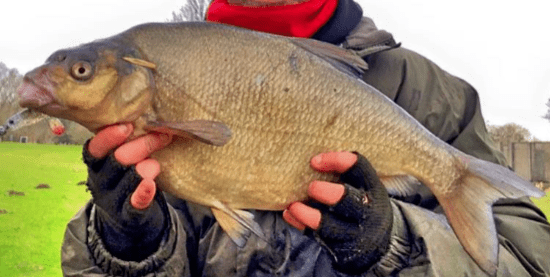
Chub
Chub are a more darker silver, often with a brown or bronze sheen down the central line of their body.
Chub are quite more distinctive than other Silverfish as they have rounded body with a very large mouth and blunt face; almost torpedo like.
Smaller Chub can easily be mistaken for Dace, the only obvious difference being the outer edge of their dorsal and pelvic fins; Chub fins have a convex outer edge while Dace have a concave outer edge.
Again, Chub are a shoal fish and can usually be found in shaded areas and are typically caught on far banks of canals.
If fishing for Chub, look for over-hanging vegetation and tree roots in the water, but be careful if you hook one as they will use the tree roots for escape.
Chub like all kinds of baits and will generally eat anything; worms and casters are a great method for attracting them to the swim, with a worm or bread on the hook.
For information on deciding which fish to fish for read – Which Fish Should I Try and Catch as a Beginner?
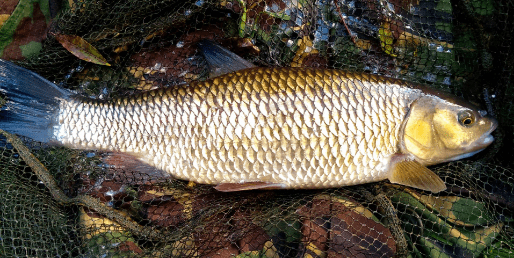
Dace
Dace are a very small fish and, as mentioned previously, look like a miniature Chub; with the exception of the dorsal and pelvic fins.
Despite their size, Dace are a greedy fish and feed well on maggots, casters and bread.
As with most silverfish, Dace shoal in huge numbers and can be an attractive target for match anglers as once you’re in to a shoal you could catch them by the dozen.
Due to their size you would need to fish light with as small hook and float.
Larger, more mature Dace tend to feed on the waterbed but would be more than happy to surface feed if the circumstances are right.

Roach
Roach is one of the most abundant Silverfish in UK waters; silver in colour with orange-red fins, they are quite distinct compared to other Silverfish (except Rudd) earning them the imaginative nickname of ‘Red-Fins’.
Roach can sometime be confused with Rudd as the only real significant differences between the two is the shape of their mouths and the position of the dorsal fin.
Roach have a down-turned mouth while Rudd has an up-turned mouth, for feeding on the surface of the water. The dorsal fin of a Rudd is more to the rear and in-line with the rear of the pelvic fin. A Roach has a dorsal fin in-line with the front of the pelvic fin.
It’s quite common to catch smaller Roach on any water in the UK; if you’re fishing with light tackle and small hooks then and you catch a fish, there’s a very good chance it’s going to be a Roach.
Larger Roach, on the other-hand, are one of the most sought-after specimens of any angler. Anything over 1lb is considered a good specimen fish, but they’re far from easy to catch.
Roach love many different baits, but personally I’ve found that maggots and casters to be most effective. Many anglers swear by the later, especially if going after a bigger Roach.
When fishing for Roach it is important to feed the swim little and often with loose bait.
Light tackle and small hooks are a must for Roach fishing, even when going after the big boys
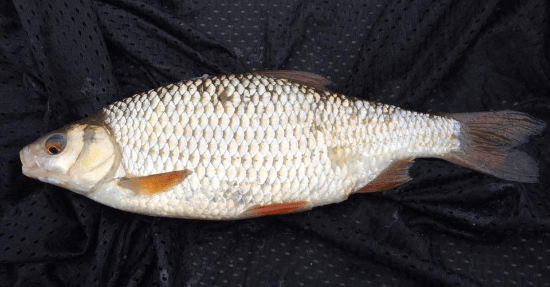
Rudd
Juvenile Rudd can easily be mistaken for Roach, with their bright silver scales. But as a Rudd matures its colour becomes darker and a more coppery-golden colour.
As discussed, Rudd have up-turned mouths as they primarily feed on the surface of water; they are a tricky fish to catch and many anglers consider it an art to fish specifically for Rudd.
When fishing for Rudd its worth reducing the weight on your hook line and using a floating caster.
Rudd will often get muscled out of a swim by the more abundant Roach and they’ll move to nearby Lillie pads or over-hanging vegetation. It’s worth bearing this in mind if you’re swim is alive with active Roach.
